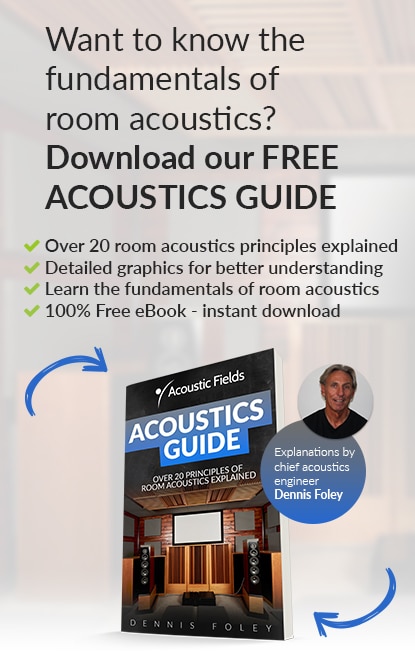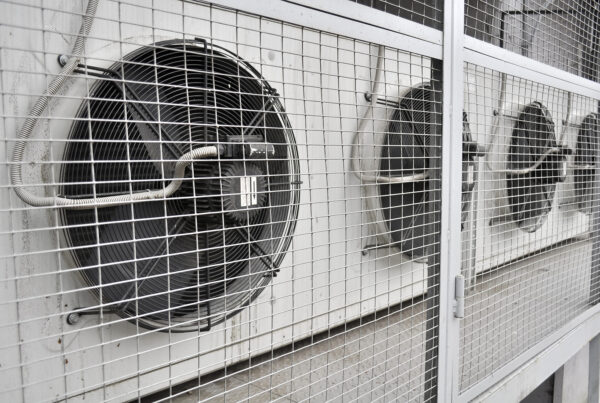Today we’re going to talk about why you need your own dedicated critical listening room design solution and how to get one. A place where you can go and just listen to music, a place in a room that’s designed just for music. We all need to get away from the world, we all need to isolate ourselves a little bit and share something special, music, with just ourselves.
We need that battery recharge, we need that emotional drain and refilling if you will and we need that energy that comes from that emotional attachment to our music and having your music played in a room that’s specifically designed and treated to realize the two-channel potential of it is without question the best way to go.
Most of us however have to share a room with other usages, we have two use it to watch television, we have to use it for entertainment, we have to use it for a family room, we even sometimes have to eat in it but a real dedicated listening room is a room where you can go to, that’s tuned and setup for your hearing, that’s designed to just be for you and it’s okay if nobody else gets it.
Critical listening room design requirements
Now how do you do that? Well if you’re real close to making the step to getting your own room obviously the first thing we have to consider is the room dimensions, we have to know what’s a good size. If you have a room then you either have to make it larger or smaller to work correctly especially in the low-frequency area.
We can calculate all that for you. Now if you need to make the room larger, that’s an issue because then we’re removing walls but let’s say that we don’t have to make it larger and let’s treat a smaller area to sound like a larger room. So what we can do at that point is we can go into our database and find you the exact room that we’ve used in the past that measures good for low-frequency treatment, because all rooms are going to need lower frequency treatment unless you have forty feet in one direction, hopefully two directions hopefully all three directions, but most of us are not that lucky to have that large of a room so we’re forced to deal with smaller rooms which is okay, we just need to treat those smaller room and make them sound larger.
First thing we need to do is remove the low-frequency issues and we can do that. Next thing we need to do is control the middle and high frequency reflections from side walls and all wall surfaces. Then obviously the third thing we need to do is position our equipment correctly and the fourth thing we need to do is provide proper room diffusion because diffusion is one of the four main acoustic room distortions that we must deal with, namely speaker boundary interference effect (SBIE), comb filtering, room modes, and poor diffusion.
I’ve been in hundreds of rooms and poor diffusion is prevalent in all of them. A lot of people get the side wall reflections balance between the side walls and direct energy managed correctly, they even understand the reflections from the front, the rear walls and ceilings and the floor. But they really don’t understand how to make all of that work in a diffused sound field and that’s the result of poor diffusion being one of the four main room acoustic distortion. So that’s what we have to deal with.
So how are we going to do that?
So let’s say we have our new room. It’s X dimensions. We really don’t want to go through the time and the effort that it’s going to take to get this room up to where we really want it. It’s a very time-consuming process and it’s relatively expensive. For every dollar that you’ll spend, you’ll spend hours realizing the potential of that dollar.
So what if all that research and development was taken out of the equation and done for you? What if all the side wall reflections were controlled at the right timing so that your direct sound and your speakers and the reflections that they produce were in balance? What if the front and rear wall diffusion sequences were calculated to your particular room size? What if all the ceiling and the floor areas were treated in a way to minimize that first reflection? After all ceilings and floors are, from a time stand point, the first reflection that you hear at the listening position, the lateral reflections have the biggest impact on your sound stage.
What if all those things and all the time it would take you to get those things done, were done for you? Well that’s what we have with our personal critical listening room design service. Basically it’s a room within a room where all the low, middle and high frequency absorption and reflection issues have been taken care of for two channel playback. The ceiling, the walls, the floor, everything has been taking care of for you. Basically we drop this room inside of your existing room and no tuning, no time spent finding out where to put, what base absorber, where to put what diffuser, how many absorbing panels you need, none of those issues need to be addressed.
Now obviously there’ll be some fine-tuning but that’s easy to do because the room is modular. After a period of time and all personal listening environments come with a six-month time period where after we do the initial setup I will come out at 3-month intervals and help you tune it. Listen to it for three months then I’ll come out, listen to it for another three months and I’ll come out again and between those two tunings of you’re listening and my research and development database and obviously my hearing, we’ll be able to get that room tuned exactly for you and the beautiful thing of it is, if you move you can take it with you.
So that’s the personal listening environment. We all need one if you’re really close to getting your own room and setting it up, you can eliminate all that up front time of picking products, not picking the right products, believing manufactures, not believing manufactures, believing manufacturer’s claims on low-frequency absorbers enough to buy the product and then realize it doesn’t work. So all of the guesswork is being taken out of the equation with the personal listening environment and that’s the beauty of our eight years of research and development and building over a hundred different rooms. Structurally and vibrationally we took all those things into consideration.
So watch the above video on the technical side of the personal listening environment and please call me on 520–392–9486 or email info@acousticfields.com for further details.
To find out more about our critical listening room design service click here.








To increase the ceiling sonic height without structural modifications, you can use quadratic diffusion. Diffusion is a technology to make…
I required from an entrepreneur the building of a home cinema with precise INTERIOR dimensions of 9m x 6m x…
If you know the frequency and amplitude of the reflection, you have a better chance of identifying sources.
Can the quality of a sound reflection identify the reflection source?